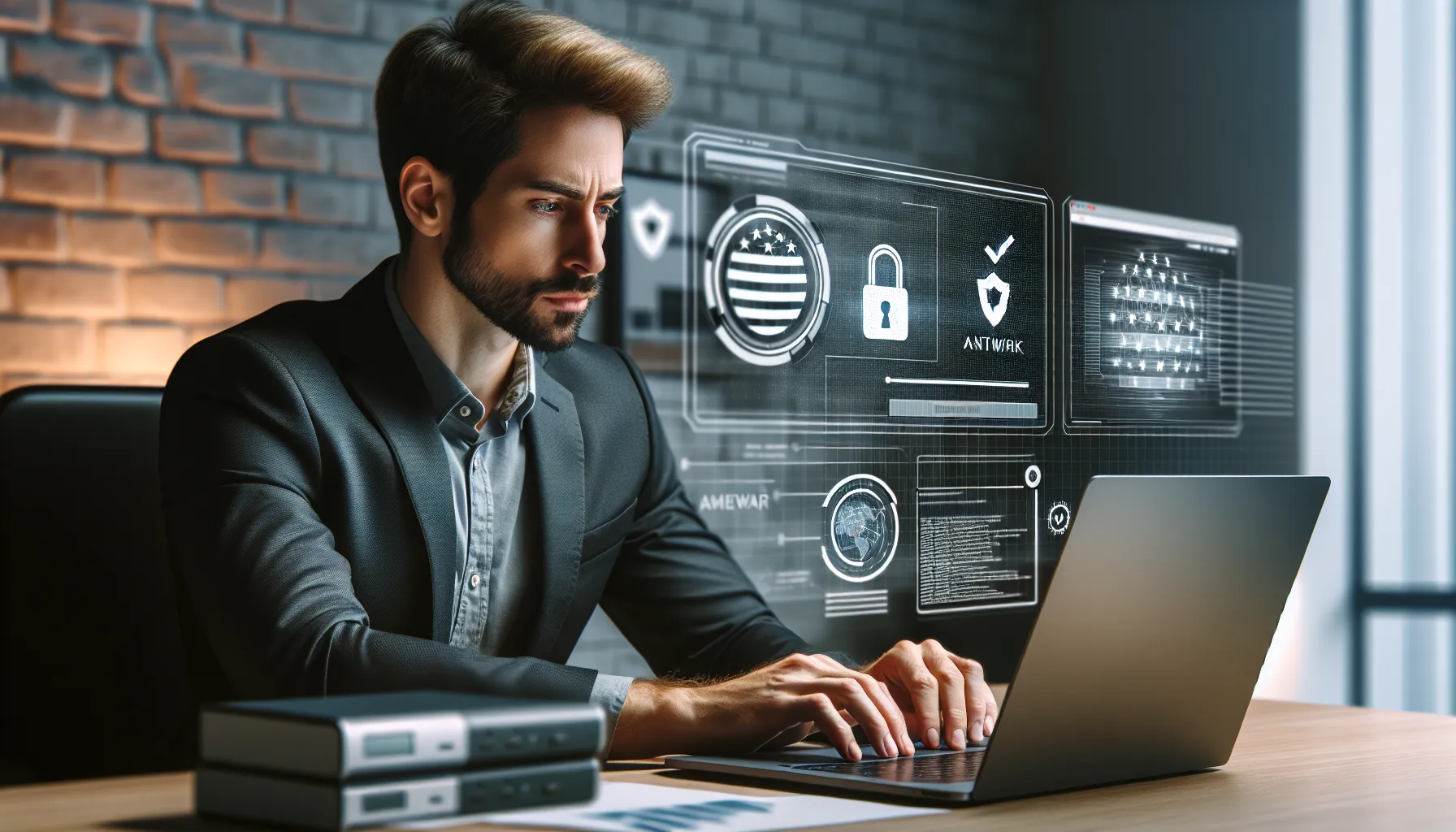Key Takeaways
- Cyber attacks target individuals and organizations, causing financial loss, data theft, and reputational damage, emphasizing the need for proactive defense.
- Basic cybersecurity practices like using strong passwords, recognizing phishing attempts, and keeping software updated significantly reduce the risk of online threats.
- Advanced measures, including multi-factor authentication, encryption, and firewalls, provide enhanced protection for sensitive data and systems.
- Practicing safe online behavior, such as using secure websites, enabling VPNs, and avoiding suspicious links or downloads, ensures better digital privacy.
- Education and awareness about evolving cyber threats and regular cybersecurity training empower individuals and businesses to stay protected.
Cyber attacks are everywhere these days, and they’re getting smarter by the minute. It’s not just big companies or tech experts who need to worry—anyone with an email account, a smartphone, or an online presence can be a target. The idea of someone hacking into my personal data used to feel like something out of a movie, but it’s a very real threat we all face.
I’ve learned that protecting yourself online doesn’t have to be overwhelming or complicated. With a few simple steps and a little awareness, you can significantly reduce your risk of falling victim to cyber threats. Let’s talk about how you can safeguard your digital life and stay one step ahead of hackers.
Understanding Cyber Attacks
Cyber attacks involve unauthorized attempts to access, steal, or disrupt data or systems. To protect against them, it’s crucial to know what they are and how they affect individuals and organizations.
Common Types of Cyber Attacks
- Phishing
Phishing is when attackers impersonate trusted entities to trick individuals into sharing sensitive information like login credentials or financial data. For example, fake emails pretending to be from banks often include malicious links.
- Malware
Malware refers to harmful software like viruses, ransomware, or spyware designed to invade, damage, or monitor devices. Ransomware encrypts files until a ransom is paid; spyware secretly collects personal information.
- Distributed Denial-of-Service (DDoS) Attacks
DDoS attacks overwhelm servers or networks by flooding them with traffic, making them unavailable to users. This disrupts services for businesses, including websites and online platforms.
- Man-in-the-Middle (MitM) Attacks
MitM attacks occur when attackers intercept communication between two parties, like online banking sessions, to steal data without victims noticing.
- SQL Injection
Attackers exploit database vulnerabilities by inserting malicious code into website forms or URLs, allowing them to access or manipulate stored data.
The Impact of Cyber Attacks on Individuals and Businesses
Cyber attacks cause financial loss, data theft, and reputational damage. For individuals, this means stolen identities, credit card fraud, or drained accounts. For businesses, it leads to lost customers, disrupted operations, and potential fines for data breaches.
Personal data like emails and passwords often sell on the black market, enabling future attacks. Businesses face operational downtime while recovering systems, lowering productivity and customer trust. For example, a company suffering a ransomware attack may halt services for days, losing revenue and credibility.
Basic Cybersecurity Practices

Practical habits reduce risks associated with cyber attacks. Implementing these basic practices strengthens online safety and privacy.
Importance of Strong Passwords
Using strong passwords stops unauthorized access to accounts. Combine at least 12 characters, including uppercase letters, numbers, and symbols. Avoid using common words, birthdays, or obvious patterns like “1234.” For example, passwords like “T3chSafe#2023” are more secure than “Password123.” Use unique passwords for every account to limit potential damage. A password manager can help store and generate strong passwords securely.
Recognizing Phishing Attempts
Identifying phishing attempts prevents falling victim to scams. Phishing often involves fake emails or messages tricking users into sharing personal information. Look for signs like generic greetings, spelling errors, unusual requests, or mismatched email addresses. Avoid clicking on links or downloading attachments from unknown sources. If uncertain, verify directly with the company or sender before responding. For instance, contact a bank through its official website instead of replying to suspicious account-related emails.
Keeping Software and Systems Updated
Staying updated protects against vulnerabilities in software and devices. Developers regularly release patches to address security flaws. Install updates for operating systems, apps, and antivirus tools as soon as they’re available. Turn on automatic updates to save time and ensure systems remain current. For example, updating your browser prevents exploitation of newly discovered cybersecurity weaknesses.
Advanced Security Measures

Strengthening defenses with advanced security measures reduces exposure to cyber threats. These techniques complement basic practices and offer enhanced protection for sensitive data.
Implementing Multi-Factor Authentication
Multi-factor authentication (MFA) adds a critical layer of security to account access. Requiring multiple forms of verification, like a password and a one-time code, makes unauthorized access significantly harder. I recommend enabling MFA on all accounts supporting it, such as email, banking, or social media platforms.
Using Encryption to Protect Sensitive Data
Encryption secures data by converting it into unreadable code, accessible only with a specific key. Encrypting devices, emails, and files ensures that sensitive information, like financial or personal records, remains secure even during data breaches or theft. I use tools like end-to-end encryption in messaging apps and ensure file storage solutions comply with encryption standards.
Employing Firewalls and Antivirus Software
Firewalls filter incoming and outgoing network traffic, blocking potential threats and unauthorized access. Antivirus software detects and removes malware, protecting systems from infections like ransomware or spyware. I maintain up-to-date software and configure these tools to run regular scans, ensuring devices and networks stay secured.
Securing Online Behavior

Protecting yourself online starts with mindful habits. Taking simple steps when browsing or interacting online can significantly reduce risks.
Safe Browsing Habits
Following safe browsing practices protects personal data and prevents exposure to malware. I rely on visiting secure websites, easily identifiable by “https://” in their URLs or a padlock icon near the address bar. Using private browsing modes helps minimize tracking and keeps account information secure. I also recommend disabling pop-ups, as they often carry malicious content, and sticking to trusted search engines for safer results.
The Role of VPNs in Online Security
Virtual Private Networks (VPNs) enhance online privacy by encrypting internet connections. When I use public Wi-Fi, VPNs help shield sensitive data like passwords and credit card numbers from interception. They also hide IP addresses, making it difficult for hackers to track online activity. Choosing a reputable VPN with strong encryption protocols ensures better security and data protection.
Avoiding Suspicious Links and Downloads
Clicking unknown links or downloading unsolicited files can lead to malware infections. I always verify the sender before clicking email links or opening attachments. Hovering over a link reveals its actual destination, allowing me to spot potential phishing attempts. I stick to official websites when downloading software and reject downloads offered through pop-ups or suspicious ads.
The Role of Education and Awareness
Knowledge serves as a critical defense against cyber threats. Educating individuals and promoting awareness significantly reduce vulnerabilities by empowering proactive online practices.
Training Employees on Cybersecurity
Creating cybersecurity-conscious employees strengthens organizational defenses. I encourage regular training sessions to teach staff how to identify phishing emails, suspicious links, and malware signs. Practical exercises, like simulated attacks, enhance recognition skills. Sharing best practices for safe browsing and password management ensures habits are consistent across teams. Organizations can improve compliance by integrating these principles into onboarding programs and annual refreshers.
Staying Updated on Evolving Threats
Keeping pace with emerging cyber threats is essential for effective prevention. I recommend following reputable cybersecurity blogs, subscribing to advisories from institutions like the Cybersecurity and Infrastructure Security Agency (CISA), and attending webinars or workshops. Changes in technology introduce new risks, so timely updates maintain preparedness. Distributing knowledge to family, friends, or colleagues creates a safer digital environment for everyone.
Conclusion
Staying safe online doesn’t have to feel overwhelming. By taking proactive steps and adopting smarter habits, we can all reduce our risk of falling victim to cyber attacks. It’s about making cybersecurity a part of our daily routines and staying informed about potential threats.
The digital world is constantly evolving, and so are the risks. But with the right tools, awareness, and a little effort, we can protect our personal information and enjoy the benefits of being connected without unnecessary worry. Let’s prioritize our online safety—it’s worth it.
Frequently Asked Questions
What is a cyber attack?
A cyber attack is an unauthorized attempt to access, steal, disrupt, or damage data or systems. Common types include phishing, malware, Distributed Denial-of-Service (DDoS) attacks, and more, each posing unique risks like data theft, fraud, or system disruptions.
Can individuals be targeted by cyber attacks?
Yes, anyone with an online presence can be a target. Cyber attacks are not limited to large companies; personal data breaches, identity theft, and financial fraud often affect individuals.
How can I create a strong password?
Use at least 12 characters, combining uppercase letters, numbers, and symbols. Avoid common words, sequences, or repeated patterns to make passwords more secure.
What is Multi-Factor Authentication (MFA)?
MFA is a security feature requiring multiple forms of verification, such as a password and a one-time code, to access an account. It adds an extra layer of protection.
Why is software updating important for cybersecurity?
Updates patch vulnerabilities that hackers could exploit. Enabling automatic updates ensures your systems and software stay protected against the latest threats.
How can I recognize phishing attempts?
Phishing messages often contain urgent requests, suspicious links, or unusual email addresses. Always verify the sender’s identity and avoid clicking unknown links.
What is the role of a VPN in cybersecurity?
A Virtual Private Network (VPN) encrypts your internet connection, masking your data and protecting it from hackers, especially when using public Wi-Fi.
How does encryption protect my data?
Encryption converts data into unreadable code, ensuring that even if a breach occurs, the stolen information remains inaccessible to unauthorized parties.
What should I look for when browsing safely online?
Check for secure websites with “https://” or a padlock icon. Avoid clicking pop-ups and unknown links, and use private browsing modes for extra privacy.
Why is cybersecurity education important?
Education helps individuals recognize threats like phishing emails and suspicious links. By staying informed, you can adapt to evolving cyber threats and share knowledge to create a safer digital space.

